A productive year.
I chose 72 favorites which you can download as a slide show. That’s two rolls of film …. Best viewed on an iPad with GoodReader or iBooks, but as it’s a plain PDF file, anything will work. Preview works well on a Mac, in full screen mode. The file is 10MB.
Touch or click the picture below. Equipment, exposure and date information appears below each snap. Enjoy!
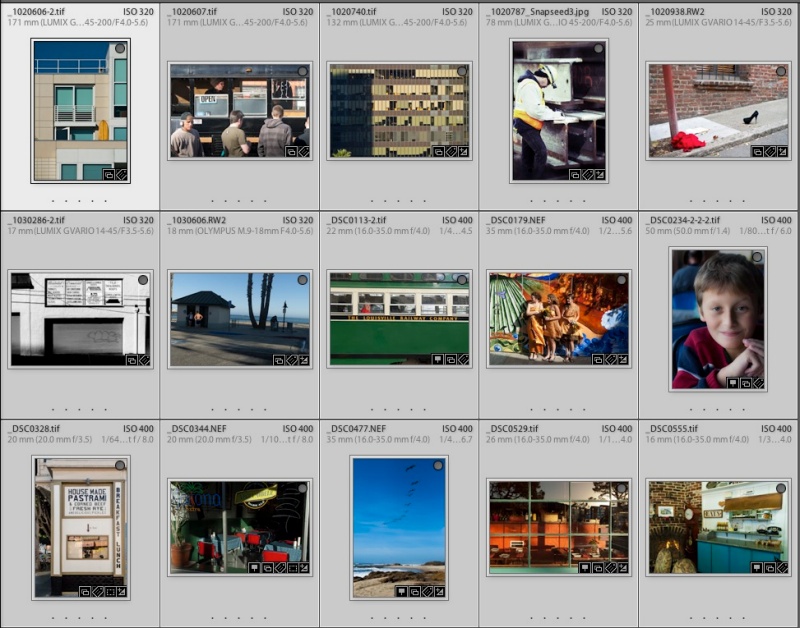
Touch or click to see the slideshow.
I asked Lightroom to report on the images I added to its catalog in 2012 and it came back with this:
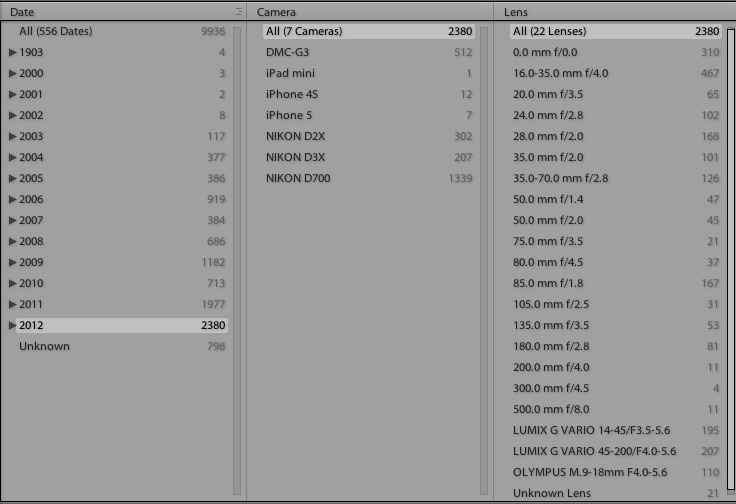
I was amazed to see how much I used the 16-35 current G Nikkor, which I have denigrated for its resin barrel here more than once. Plastic or not, it obviously works for me. In the above table ’75mm’ refers to the 75-150mm Nikon Series E zoom and ’80mm’ means the 80-200mm Nikkor zoom. These are MF lenses and even though I have ‘chipped’ them, it’s impossible to program a zoom range in the EXIF settings. The ’35-70mm’ optic is the discontinued AF-D trombone Nikkor zoom.
The above is what I kept, meaning after the cull.
Here’s the camera and lens data for the 72 images in the slide show:
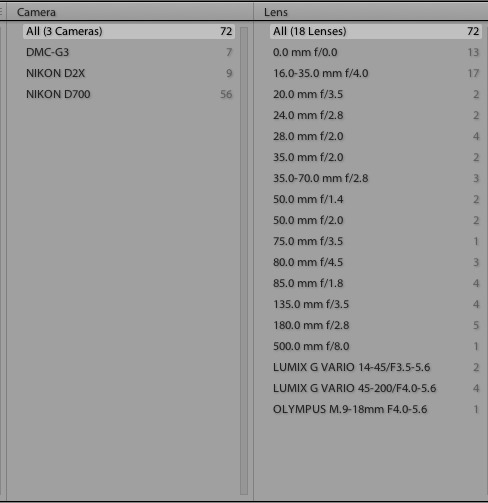
The 13 count under 0.0mm results from old Nikkor MF lenses used before I installed the CPU chip which properly reports focal length. Without a CPU installed LR is ‘blind’ as to the lens used. The lenses used for these 13 snaps were 20mm – 4, 50mm f/2 – 3, 75-150mm – 1, 200mm – 2, 300mm – 1 and 500mm – 2. I appear to have been focal length agnostic in 2012, whereas I usually trend to the 28mm and shorter end of the spectrum. All those great MF Nikkors account for the 2012 data spread.
I cannot think of a better metric for determining whether you should keep a body or a lens than by consulting the ‘keeper’ data in Lightroom. If the hardware at issue is missing, sell it.
As for ISO, I’m pretty much a 400 ASA, er, ISO stick-in-the-mud. Years with Kodak’s TriX film is a hard habit to shake!
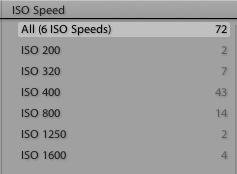
Finally, dates speak to my commitment to try and get out at least one day every week to take pictures:
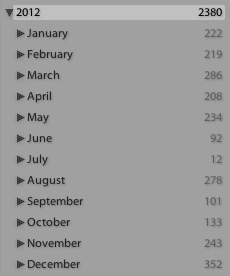
People feature in 48 of the 72 images and all save a solitary landscape with birds were taken on the street, mostly in San Francisco.
The point here is that you can learn an awful lot about your work habits, with a view to change and improvement, by studying LR’s metadata summaries. These data not only objectively inform you of your work habits but can point to new directions – ‘must use wider lenses more’, ‘should try larger apertures more frequently’, and so on. The last screenshot, above, is an important one to me, as it tells whether I have been snapping regularly. Doing so, I find, keeps the eye and brain sharp. Long layoffs work for some, but not for me.
For me, the most troubling metric is that fully 79% of my ‘keepers’ in 2012 were in the modest aperture range of f/4 to f/8. There’s little point in owning fast lenses if that’s all you use, it seems to me and full frame sensors are all about selective focus. So one commitment for 2013 is to open those lenses up. Next year’s results need to show far more f2 and f/2.8. And yes, f/1.4!
One other finding. Only one in seven of my snaps was round-tripped to Photoshop from Lightroom (my import repository), mostly for correction of leaning verticals. This speaks to my commitment to get it right when pressing the button, with only light post processing. That seems right to me.